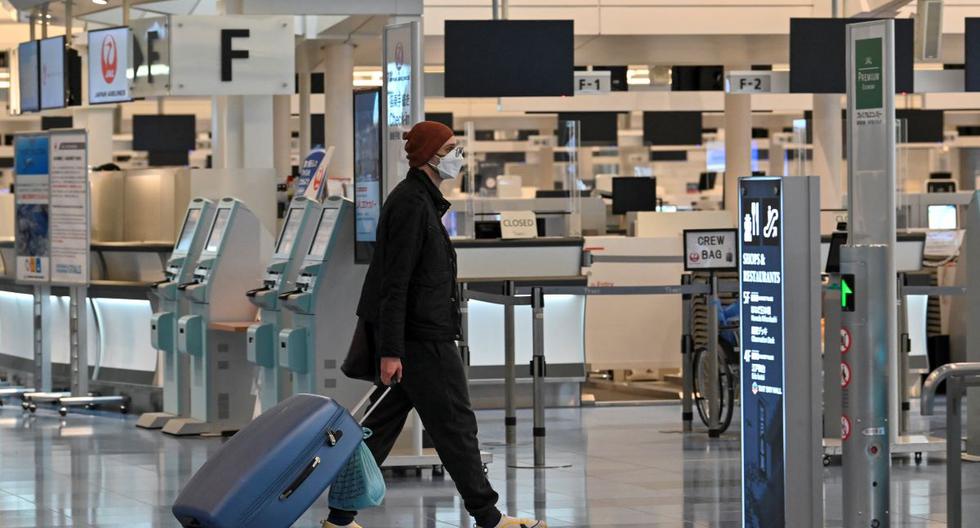What is needed to travel to Japan? The Asian country will reopen its borders to tourists, after having kept them closed since the start of the pandemic. Do you know how it will be the only way you can do tourism?
MORE INFORMATION: Do you want to travel abroad? know which are the countries you can visit from Peru only with DNI
Currently, Japan allows the entry of 10,000 travelers a day, who are Japanese or returning foreign residents, as well as new residents with the aforementioned visas or business visitors. The figure from June 1 will rise to 20,000 per day and will include tourists.
The number of foreign visitors to Japan reached a record 32.88 million in 2019. The tourism sector is important in that country, but it was also affected by the pandemic caused by the coronavirus. Do you know what to do and what are the conditions to travel to Japan for tourism?
SINCE WHEN DOES JAPAN OPEN ITS BORDERS TO TOURISTS?
Japan’s Prime Minister Fumio Kishida announced that the country will reopen its borders to foreign tourists from June 10. Citizens of 98 countries do not require a vaccination card.
WHAT ARE THE CONDITIONS TO TRAVEL TO JAPAN?
The government of japan has classified the requirements by colors and countries, according to their risk:
blue group.
- They will not ask for a vaccination card.
- They do not require to undergo PCR tests upon arrival in Japan.
- They do not require going through a quarantine period.
yellow group
Although they do not require the vaccination card, the entry conditions vary if it is presented or not.
- No proof required upon arrival in Japan.
- Vaccination certificates: If it is presented, it does not require quarantine or a negative COVID-19 test.
- anticovid test. You must be tested upon arrival if you do not have proof of vaccination. Three days of home quarantine + negative result of a voluntary test or 7-day home quarantine without test is available.
red group
Although they do not require the vaccination card, the entry conditions vary if it is presented or not.
Undergo a test upon arrival in Japan.
- Without vaccination certificate: requires 3-day quarantine at a specific facility designated by the head of the quarantine station (+negative test result (PCR test) at the facility)
- With vaccination certificate: three days of home quarantine + negative result of a voluntary test or 7-day home quarantine without test.
WHY CAN YOU TRAVEL TO JAPAN?
Despite the fact that Japan, as of June 10, will open its doors to foreigners without the need for a vaccination card or PCR tests, the restrictions of the Ministry of Foreign Affairs on entry go the other way. Get to know them:
Tourism: the Tourists will still not be able to enter Japan individually. Travelers must be part of guided tour groups, organized by a travel agency. The measure seeks to facilitate the application of anti-contagion measures.
Work and business: foreign nationals who have just entered Japan for a short-term stay (less than three months) for purposes including business and employment (continued from March 1)
Stay: Newly-Entered Foreigners Entering Japan for a Long Stay (Continued from March 1)
WHICH COUNTRIES MAKE UP THE LIST OF THE BLUE, YELLOW AND RED GROUP FOR ENTRY TO JAPAN?
This is the classification given by the Japanese government for entering its territory, after deciding to open its borders.
Blue group countries
Afghanistan, Algeria, Argentina, Armenia, Australia, Austria, Azerbaijan, Bahrain, Bangladesh, Belgium, Benin, Bolivia, Bosnia and Herzegovina, Brazil, Bulgaria, Cambodia, Cameroon, Canada, Chile, China, Colombia, Costa Rica, Côte d’ Ivoire lvoire, Croatia, Czech Republic, Denmark, Djibouti, Dominican Republic, Ecuador, El Salvador, Estonia, Ethiopia, Finland, France, Germany, Ghana, Greece, Guatemala, Hong Kong, Hungary, Iceland, Indonesia, Iran, Iraq, Ireland , Israel, Italy, Jamaica, Jordan, Kenya, Kyrgyzstan, Laos, Latvia, Lithuania, Luxembourg, Madagascar, Malawi, Malaysia, Mexico, Monaco, Mongolia, Montenegro, Morocco, Mozambique, Myanmar, Netherlands, New Zealand, Nigeria, Norway , Palau, Panama, Papua New Guinea, Paraguay, Philippines, Poland, Qatar, Republic of Korea, Romania, Russia, Rwanda, Serbia, Singapore, Slovakia, Slovenia, South Africa, South Sudan, Spain, Sweden, Switzerland, Taiwan, Tanzania , Thailand, Timor-Leste, Uganda, United Arab Emirates, United Kingdom , United States of America and Zambia.
Yellow group countries
Andorra, Angola, Antigua and Barbuda, Bahamas, Barbados, Belarus, Belize, Bhutan, Botswana, Brunei, Burkina Faso, Cape Verde, Central African Republic, Chad, Comoros, Cook Islands, Cuba, Cyprus, Democratic Republic of the Congo, Dominica, Egypt , Equatorial Guinea, Eritrea, Swaziland, Federated States of Micronesia, Gabon, Gambia, Georgia, Grenada, Guinea, Guinea-Bissau, Guyana, Haiti, Honduras, India, Kazakhstan, Kiribati, Kosovo, Kuwait, Lebanon, Lesotho, Liberia, Libya , Liechtenstein, Macau, Maldives, Mali, Malta, Mauritania, Mauritius, Moldova, Namibia, Nauru, Nepal, Nicaragua, Niger, Niue, North Korea, North Macedonia, Oman, Palestine, Peru, Portugal, Republic of Burundi, Republic of Congo, Republic of the Marshall Islands, Republic of Vanuatu, Saint Kitts and Nevis, Saint Lucia, Saint Vincent and the Grenadines, Samoa, San Marino, São Tomé and Príncipe, Saudi Arabia, Senegal, Seychelles, Solomon Islands, Somalia, Sri Lanka, Sudan, Suriname, Syria, Tajikistan, Togo, Tonga, T Trinidad and Tobago, Tunisia, Turkey, Turkmenistan, Tuvalu, Ukraine, Uruguay, Uzbekistan, Vatican, Venezuela, Vietnam, Western Sahara, Yemen and Zimbabwe.
group group countries
Albania, Fiji, Pakistan and Sierra Leone.

















